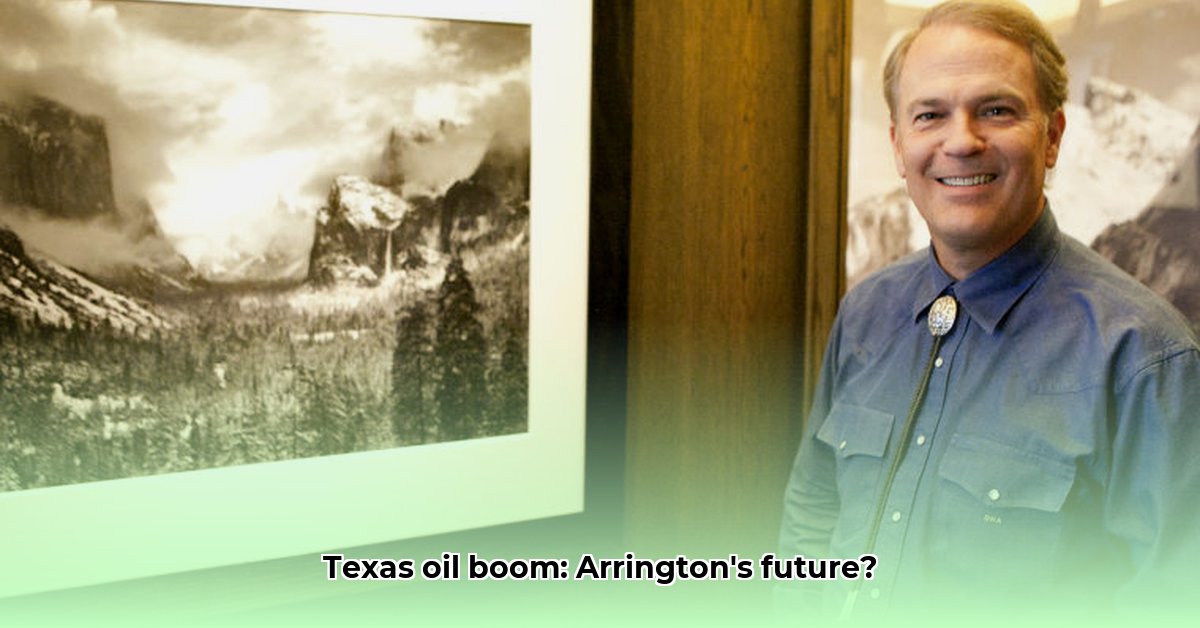
Arrington Oil & Gas is a Texas-based oil and gas exploration and production (E&P) company. This article analyzes Arrington's operations, strategic outlook, risk profile, and future prospects, providing actionable intelligence for investors, regulators, and industry professionals. Our analysis reveals a company with potential, but also significant challenges inherent in the volatile energy sector.
Geographic Diversification: A Risk Mitigation Strategy
Arrington Oil & Gas strategically holds leases across numerous Texas counties, including Live Oak, DeWitt, Fort Bend, Winkler, Culberson, Ward, Fisher, Hood, Parker, Johnson, Somervell, and Tarrant. This diversified approach reduces dependence on any single geographic area, thereby mitigating risks associated with localized production issues, regulatory changes, or environmental concerns. While precise production data per lease isn't publicly available, the extensive footprint suggests significant operational activity across the state. A map visualizing these lease locations would provide a clearer picture of their operational spread. How effectively this diversification strategy protects against regional downturns remains to be fully determined, pending a more detailed production analysis.
Operational Overview: Production Data and Efficiency
Currently, detailed production data for Arrington Oil & Gas is unavailable, hindering a complete assessment of operational efficiency. Without specific figures on barrels of oil equivalent per day (BOEPD) and associated costs, it's difficult to definitively evaluate their production levels and profitability. The absence of transparent production information limits an in-depth analysis of their operational performance. However, the numerous lease holdings strongly suggest substantial activity. Further investigation into financial reports or independent industry analyses might uncover these missing operational details. Could more transparent reporting practices unlock a more comprehensive understanding of Arrington's operational efficiency and financial health?
Strategic Outlook: Short-Term and Long-Term Perspectives
Arrington's strategic outlook varies depending on the stakeholder perspective. Short-term (next 12 months) and long-term (3-5 years) goals diverge significantly across management, investors, regulators, and local communities.
Short-Term Strategies (Next 12 Months)
- Management: Focus on maximizing existing operations through efficiency improvements (technology upgrades, personnel optimization), and securing necessary funding for continued growth.
- Investors: Monitoring operational efficiency, production numbers, and financial health for strong performance indicators. Transparency and risk communication are paramount.
- Regulators: Ensuring compliance with safety and environmental regulations; monitoring responsible operational practices.
- Local Communities: Understanding the local economic and environmental impacts of Arrington's activities; fostering open communication and addressing community concerns.
Long-Term Vision (3-5 Years)
- Management: Expansion into new, potentially more lucrative areas; potential acquisitions; investment in sustainable technologies and adaptation to stricter environmental regulations (e.g., carbon capture).
- Investors: Assessing long-term growth, considering market trends and ESG (environmental, social, and governance) factors; balancing potential returns with environmental and societal impact.
- Regulators: Implementing and enforcing long-term sustainable regulations to protect both the environment and public health; stricter emission standards.
- Local Communities: Continued monitoring of environmental impact; sustained commitment to responsible operations and open communication.
Risk Assessment: Identifying and Mitigating Challenges
Arrington faces several key risks inherent to the oil and gas industry:
| Risk Factor | Likelihood | Impact | Mitigation Strategy |
|---|---|---|---|
| Fluctuations in Oil/Gas Prices | High | High | Diversification; hedging; efficient cost management |
| Regulatory Changes | Medium | High | Proactive monitoring; strong compliance; engagement with regulators |
| Operational Problems | Medium | Medium | Regular maintenance; contingency plans; insurance |
| Competition | Medium | Medium | Strategic acquisitions; focus on niche markets; technological innovation |
| Environmental Concerns | Medium | High | Sustainable practices; emission reduction; community engagement |
Effective risk mitigation is crucial for Arrington's long-term viability. Their geographic diversification represents a proactive step, but further strategic planning and transparent communication are necessary to build resilience. "The energy sector is particularly prone to unforeseen events," notes Dr. Anya Sharma, Professor of Energy Economics at the University of Texas. "Proactive risk management is not merely beneficial; it's essential for survival."
Conclusion: Arrington's Path Forward
Arrington Oil & Gas operates within a complex and volatile market. Their geographic diversification demonstrates a sound risk-mitigation strategy, but the lack of publicly available production data limits a thorough assessment of their operational efficiency and financial health. Transparency in reporting, coupled with a robust and adaptable strategy, will be essential for navigating the challenges and capitalizing on opportunities within the Texas oil and gas sector. The company's future success hinges on its ability to effectively manage risks, maintain investor confidence, and demonstrate a commitment to environmental sustainability.
Sources
ICICI Direct Research on Key Financial Ratios for Oil and Gas Stocks (Note: This link provides general industry analysis and is not specific to Arrington Oil & Gas.)